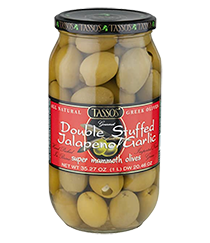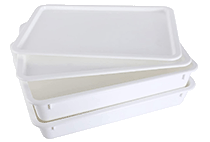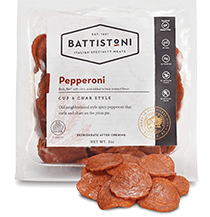We knew at some point writing about pizza, we would have to address the elephant in the room, olives. Olives are a polarizing issue in our marriage. Similar to the controversial pineapple on pizza debate, olives in our household are also controversial.
I can’t stand them. Doesn’t matter if they are green, black, Kalamata, or stuffed with goodies; I can’t stomach the thought of olives for homemade pizza.
Table of Contents

However, my lovely wife, some might say my better half, loves these salty little devils. So despite the fact that I despise these briny little things, we are going to dedicate a whole post about olives and the best olives for homemade pizza because even though I hate olives, I love my wife, and she, unfortunately, loves olives.
What are Olives?
Surprisingly olives are fruits, and they are parts of the stone fruit family, like cherries, peaches, almonds, and pistachios. Olives can be eaten on their own or made into olive oil.
While olive oil is consumed throughout the world, it is originally from the Mediterranean, where olive trees are abundant, and the highest quality olive oil is made. Olives and olive oil are full of antioxidants and are high in vitamin E.
Olives are considered a healthy, albeit salty, food. Olives and olive oil are a big part of the popular Mediterranean diet that is connected to improved health, low cholesterol, and weight loss and management.
Olives, for many, but not me, are a favorite pizza topping. Usually, you see black olives on pizza, but you can really put any type of olive on pizza.
Most Common Types of Olives

These are some of the most common types of olives you will see in the store. This is not a complete list. There are a lot of other types of olive, but these are the most common.
Kalamata
Kalamata olives are Greek olives with a very salty punch. They are common in Greek salads and pasta salads. These are pretty intense and need to be pitted and cut before adding them to homemade pizza.
Manzanilla
These are Spanish olives originally from Seville. They are common to California now, too, because Spanish priests and colonizers brought them with them and planted them all over the California coast. They are inexpensive and have a nice flavor (so I hear), and are popularly used in Puerta Rican cuisine.
Arbequina
Another Californian olive that came courtesy of Spain is the Arbequina. It is a small olive and is generally used for olive oil. It is an immature olive with a light fruity taste. It even has been made into an ice cream flavor. And no, we haven’t tried it.
Castelvetrano
These Sicilian olives have a bite and are commonly served in wine bars as a tasty nibble while drinking wine. They are pickled while they are still green, and the skin sticks to the pit when you bite into them. If you want to use these olives for homemade pizza, you will need a paring knife and some time to cut them off the pit.
Niçoise
This French olive is famous for being an integral part of the French Nicoise salad. It is a small black olive with a mild, almost nutty flavor. They are one of the more expensive olives and not as common as table or tapas olives.
Picholine
Originally a French olive, nowadays, it is commonly grown in Morocco. They make a light olive oil and are excellent for charcuterie boards. They are cured in a brine for almost a year to get their distinct taste.
California ripe olives
These are the olives that you find everywhere. These black olives come chopped, sliced, and whole, and they are common to Mexican dishes and, of course, Tex-Mex foods. And they are a popular olive for homemade pizza. These are the little olives that your nieces and nephews stick on their fingers during Thanksgiving. They are inexpensive and have a nutty taste.
To Stuff or Not to Stuff

You can find classic green olives stuffed with red pimiento, but there are a lot of other types of stuffed olives that are usually sold as table olives.
- Feta cheese stuffed olives
- Blue cheese stuffed olives
- Jalapeño and garlic stuffed olives
- Lemon stuffed olives
- Anchovy stuffed olives
- Sun-dried tomato stuffed olives
- Almond stuffed olives
- Tuna stuffed olives
So you can see, there are lots of different ways to stuff an olive. And then there are the spreads.
Tapenade is a spread made from finely chopped olives, anchovies, and capers. It’s common to put on bread like focaccia or crackers for simple canapes. Sicilian caponata is similar to tapenade, but it includes roasted eggplant, capers, anchovies, and olives. Turkish lahmacun sauce can also include olives of your choice.
Both tapenade and caponata are sometimes referred to as a dip or spread, or even a relish, and there are many different ways and variations of both. Tapenade and caponata are excellent for bruschetta, on top of a calzone, inside a hot pocket, or as a pizza dipping sauce.
Best Olives for Topping Your Homemade Pizza

There really is not a clear answer here because if you ask me, I would be honest and say that olives should not be on pizza or anywhere for that matter. But since I know I am in the minority, and many people strangely do love olives on pizza.
I have researched and asked friends and family and collected a few of the favorite ways people that love olives use them for their homemade pizza.
Ways to Use Olives For Homemade Pizza

- Black olives and pepperoni
- Black olives, anchovies, and green peppers
- Kalamata olives with salami and mushrooms
- Kalamata olives with shrimp and Feta
- Green olives, salami, red onions, and red pepper flakes
- Green olives, mushrooms, red peppers, and pepperoni
- Black or green olives, artichokes, mushrooms, ham
- Black olives, ground beef, corn, and jalapeños for a Tex-Mex style
- Green olives with BBQ chicken and red onions
How do you like to use olives on your pizza?













